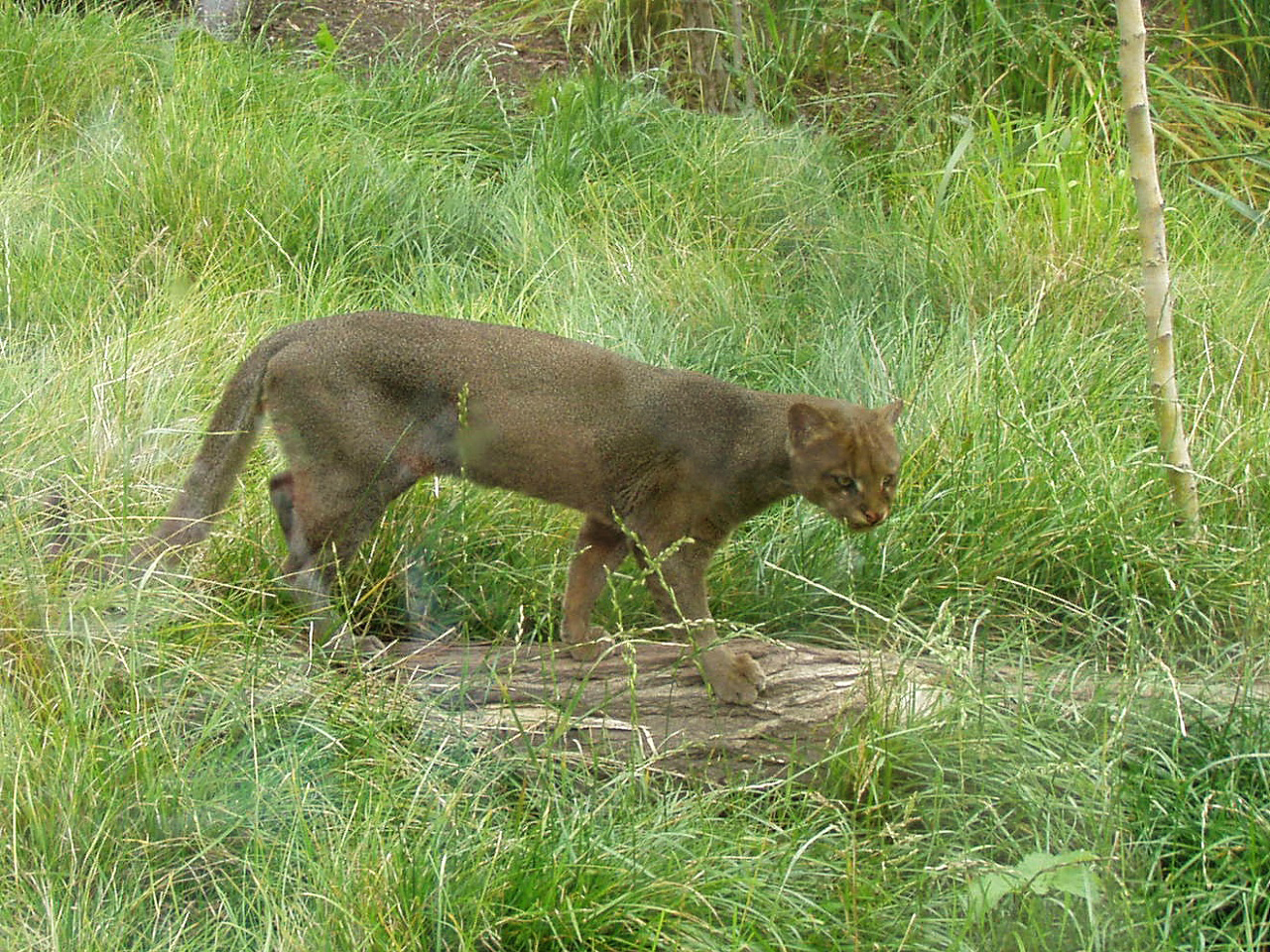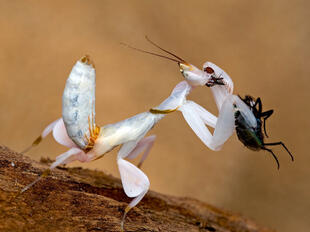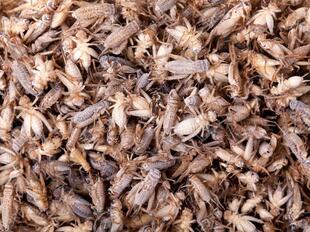
Jaguarundi
Phylum —chordata
Class — mammalia
Order — сarnivora
Family — felidae
Genus – herpailurus
Appearance
It has an elongated body with relatively short legs, a small, narrow head, small, round ears, a short snout and a long tail. Around twice as large as the domestic cat, the jaguarondi reaches nearly 36 cm (14 in) at the shoulder and weighs 3.5–7 kg (7.7–15.4 lb). There are two color morphs—gray and red.
Habitat
Jaguarundislive in a broad array of closed as well as open habitats ranging from tropical rainforests and deciduous forests to deserts and thorn scrubs. They are fairly common in Brazil, Peru and Venezuela.
Behavior
Ajaguarundi is shy and reclusive. Though activity has been observed throughout the day and at night, jaguarundis prefer hunting during daytime and evening hours. This cat appears to be more diurnal than most other cats, especially spotted cats that tend to be more active at night. The jaguarundi can swim across medium-sized rivers. Jaguarundis are efficient climbers as well, but hunt mainly on ground; the coat color works as a good camouflage for terrestrial activity. They can leap up to 2 m (6.6 ft) into the air to catch birds.
Marking behavior could serve as a means of olfactory or visual communication among jaguarundis. The jaguarundi has a broad vocal repertoire: 13 different calls have been recorded including chattering, purring, screaming, a 'wah-wah' call, whistling, yapping and a peculiar bird-like chirp.
Diet
The jaguarundi typically feed on small-sized prey weighing less than 1 kg (2.2 lb), including ground-feeding birds, reptiles, rodents and small mammals. Jaguarundis will also take larger prey such as domestic poultry, fish, marmosets, rabbits and opossums; a study recorded small deer (possibly carrion) in the diet. Vegetation such as grasses have also been recorded in their diet.
Reproduction
Jaguarundishave been observed mating all year round, with peaks at different times of the year across the range. Estrus lasts three to five days, marked by the female regularly rolling onto her back and spraying urine. Sexually mature males will pursue the female, not reacting to any aggressive behavior from her side. As in many other felids, the male bites the fur on the female's neck on mounting; the female lets out a loud scream on penetration.
After a gestation period of 70 to 75 days, a litter of one to four kittens is born in a den constructed in a dense thicket, hollow tree, or similar cover. The kittens are covered well with fur and the underside is marked with spots, which disappear as they age; the coat color gradually changes as the kittens grow older. The mother starts bringing solid food for the kittens when they are around three weeks old, but they simply play with it until the mother ultimately ingests it. Kittens are capable of taking solid food like birds and guinea pigs at around six weeks. Jaguarundis become sexually mature at one to three years of age.
In captivity
Lifespan of a Jaguarundi is up to 15 years has been recorded in captivity.
The best way to gain an animal`s respect is to hand-feed it since its childhood. So it will know that having you nearby is safe for it.
It is prohibited to play “fighting with an arm or a foot” game with a kitten. It is better to use toys otherwise getting mature it will think that your own arms and feet are toys, it will bite and scratch them. It is recommended to play with a cat in the bathroom or in the swimming pool using “swimming” toys.
It is prohibited to shout at the cat or to beat it. For example, if it constantly climbs your dining table it should be punished by a spray or an air pump. You should say, ‘Don`t do it!” and blow hard.Jaguarundi will learn a lesson quickly and in the future a verbal command will be enough.
If playing Jaguarundi scratches or bites you, you should leave it alone. It will soon understand that it does something wrong if it is alone. These animals are very smart and require training as dogs do.
It is important that all the family members pay attention to the Jaguarundi. You are its parents, its flock where it is safe and it is grateful for it.
It is necessary to teach the Jaguarundi to use a toilet with a filler (desirably with a wood one). If it pooped in the wrong place you shouldn`t scold at it, you should give a verbal explanation and show the right place. Keep its toilet clean.
It is necessary to vaccinate Jaguarundis like domestic cats. But you should be sure that the vaccination is of a good quality and does not contain active viruses. Otherwise your pet may fall ill and die. It is very important. Your pet can`t explain you what it hurts that`s why if you pay attention to its strange behavior and to the strange way it moves you must take it to the vet immediately.
Its diet consists of some raw meat with bones – poultry and beef (for example, chicken and quail thighs, wings, hearts, liver, cervixes). It`s preferably to add special vitamins with calcium supplements. Grownup cats eat from 0.3 up to 0.8 kilos of meat per day.
 Russian
Russian
 English
English
























